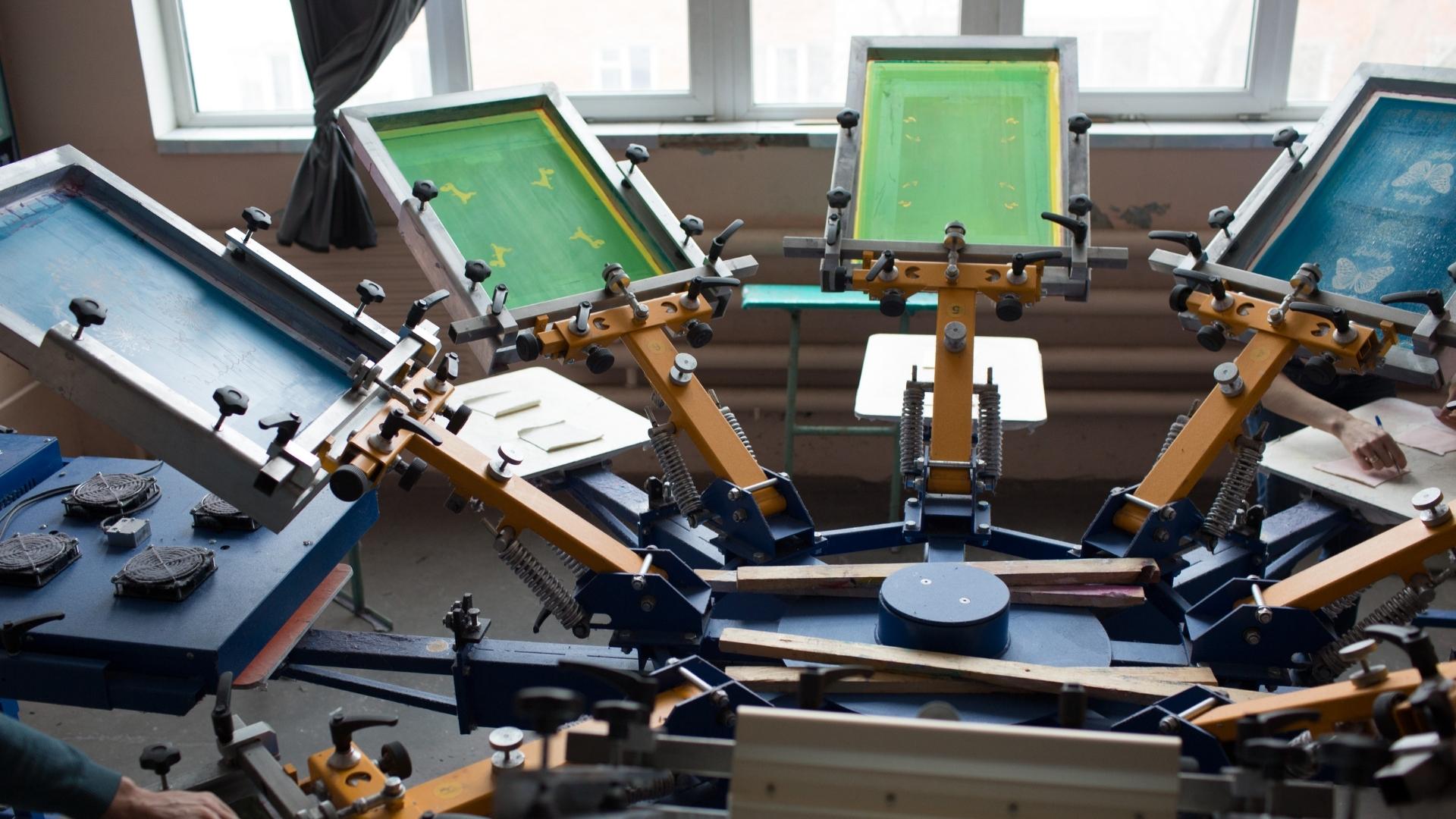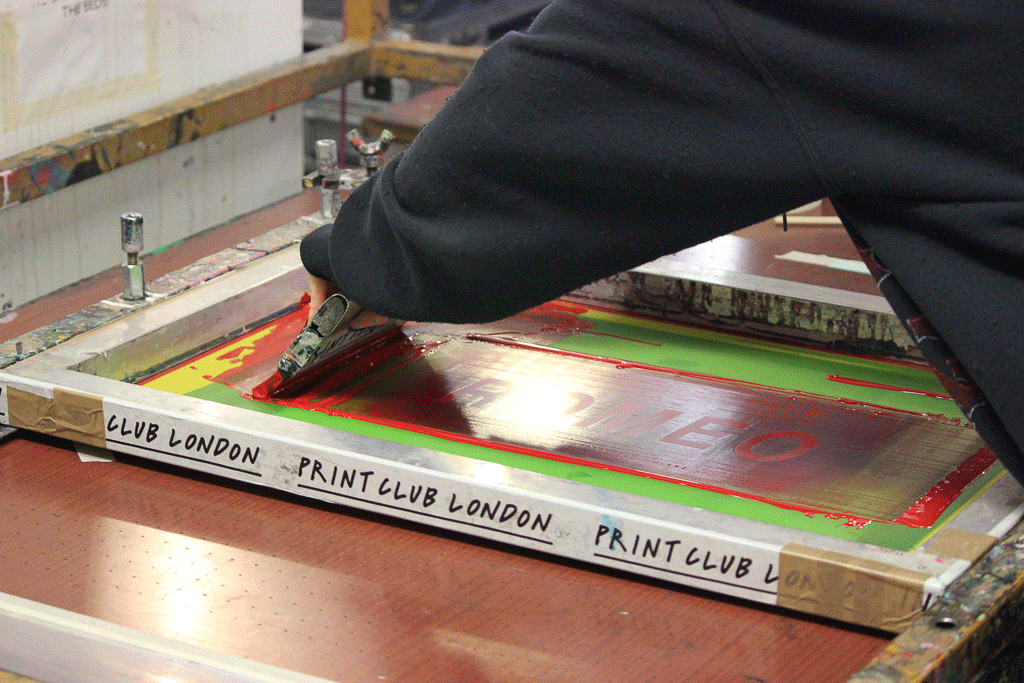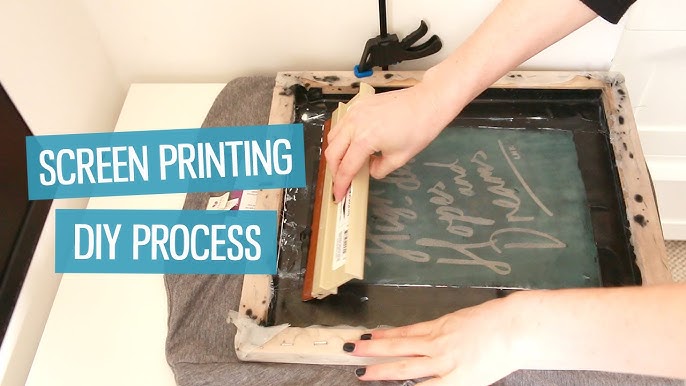The Important Overview to Comprehending Screen Printing and Its Versatile Makes use of
Screen printing has a rich background that goes back to ancient times, evolving into a sophisticated technique utilized across numerous sectors today. This guide explores the ins and outs of the screen printing procedure, describing its applications in home, advertising and marketing, and style décor - 10:9 Design Company. Understanding these principles can open creative potential for both industrial and artistic jobs. The following areas will expose important pointers and techniques to improve one's screen printing endeavors
The Background of Screen Printing
Screen printing has origins that map back centuries, its advancement shows the imaginative and technical innovations of various cultures. Stemming in ancient China, the method was initially used for embellishing fabrics and later infect Japan, where it ended up being indispensable to Ukiyo-e woodblock printing. The technique shifted to Europe in the 18th century, where it obtained appeal amongst artisans and business printers. The innovation of picture solution in the 20th century reinvented screen printing, enabling more complex designs and greater performance. Musicians like Andy Warhol even more moved its popularity, using the tool to create legendary works that blended commercialism and great art. By the late 20th century, screen printing had developed itself as a versatile method, used in vogue, marketing, and art. Today, it proceeds to advance, integrating electronic modern technology and increasing its applications throughout numerous industries.
The Screen Printing Process Explained
Screen printing changes creative visions right into concrete styles through a series of accurate steps. A picture is developed and then moved onto a screen, commonly made of fine mesh material extended over a frame. A light-sensitive emulsion is used to the screen, which is subjected to light, hardening in areas not covered by the photo. After washing out the unhardened emulsion, a stencil is created.
Next off, the screen is positioned over the substrate, whether it be material, paper, or another material. Ink is after that pushed via the open locations of the stencil using a squeegee, transferring the design onto the substratum listed below. This procedure can be duplicated for numerous colors, needing separate displays for each hue. The published product is treated making use of warmth to ensure the ink sticks correctly, resulting in a durable, vivid design prepared for usage.
Sorts Of Screen Printing Techniques

In addition, specialty techniques, such as discharge screen printing, get rid of color from the textile to develop softer prints, while aluminum foil screen printing applies metal aluminum foil to accomplish a glossy surface (10:9 Design Embroidery). Each strategy supplies distinct attributes, catering to numerous imaginative requirements and production ranges, inevitably broadening the possibilities within the screen printing domain name
Applications of Screen Printing in Various Industries

Furthermore, the signage and advertising fields utilize screen printing for creating appealing displays and banners. This approach permits bold colors and intricate styles that catch interest. In electronics, screen printing is used for applying conductive inks to circuit card, vital for part links. Additionally, the home design industry accepts screen printing to generate distinct designs on see fabrics and wall surface art. Overall, screen printing serves as a crucial device across varied fields, improving products with personalized and aesthetically enticing graphics.
Tips for Successful Screen Printing Projects
While carrying out a screen printing task, mindful focus to information can significantly boost the final outcome. Selecting high-quality products is vital; this includes the screen, inks, and substratums. Making use of suitable mesh matters can influence ink deposition and information resolution. Prep work is equally important; extensive cleaning of displays and appropriate direct exposure times assure crisp prints.
Next, accurate registration is vital for multi-color prints. Using positioning tools can aid attain specific layering. In addition, testing prints on scrap products before production helps recognize prospective problems without throwing away resources.

Frequently Asked Questions
What Materials Are Best for Screen Printing on Material?
Cotton and polyester blends are ideal for screen printing on textile because of their longevity and ink absorption. In addition, specialized fabrics like silk or canvas can generate unique appearances and finishes, boosting the total layout high quality.
How Do I Tidy and Maintain Screen Printing Equipment?
To clean up and keep screen printing devices, one should routinely clean displays with ideal solvents, check mops for wear, lube moving components, and store all things in a completely dry, dust-free environment to lengthen their life expectancy.
What Are the Environmental Effects of Screen Printing?
Screen printing can have considerable environmental effects, including chemical waste from solvents and inks, water use during cleansing procedures, and power consumption. Lasting techniques and environment-friendly products are necessary for reducing these unfavorable impacts.
Can Screen Printing Be Done in the house Properly?
Screen printing can be successfully done at home with the ideal products and strategies. Hobbyists can create top quality prints, though success depends upon use this link their skill level, devices, and understanding of the process included.
What Are the Costs Related To Beginning a Screen Printing Company?

Starting a screen printing service involves costs for equipment, materials, and workspace. Preliminary expenditures typically range from a few hundred to several thousand dollars, depending upon the range, high quality of equipment, and preferred production capability.
Screen printing has a rich history that dates back to ancient times, progressing into a sophisticated strategy used across numerous markets today. Another strategy, rotary screen printing, utilizes round displays, promoting constant printing on visit their website textile rolls, therefore boosting effectiveness for large manufacturings. Furthermore, specialized strategies, such as discharge screen printing, get rid of dye from the textile to produce softer prints, while aluminum foil screen printing uses metal aluminum foil to attain a shiny finish. In the fashion sector, screen printing is extensively used to develop vibrant styles on apparel, making it possible for brand names to showcase their distinct styles. Cotton and polyester blends are perfect for screen printing on material due to their toughness and ink absorption.